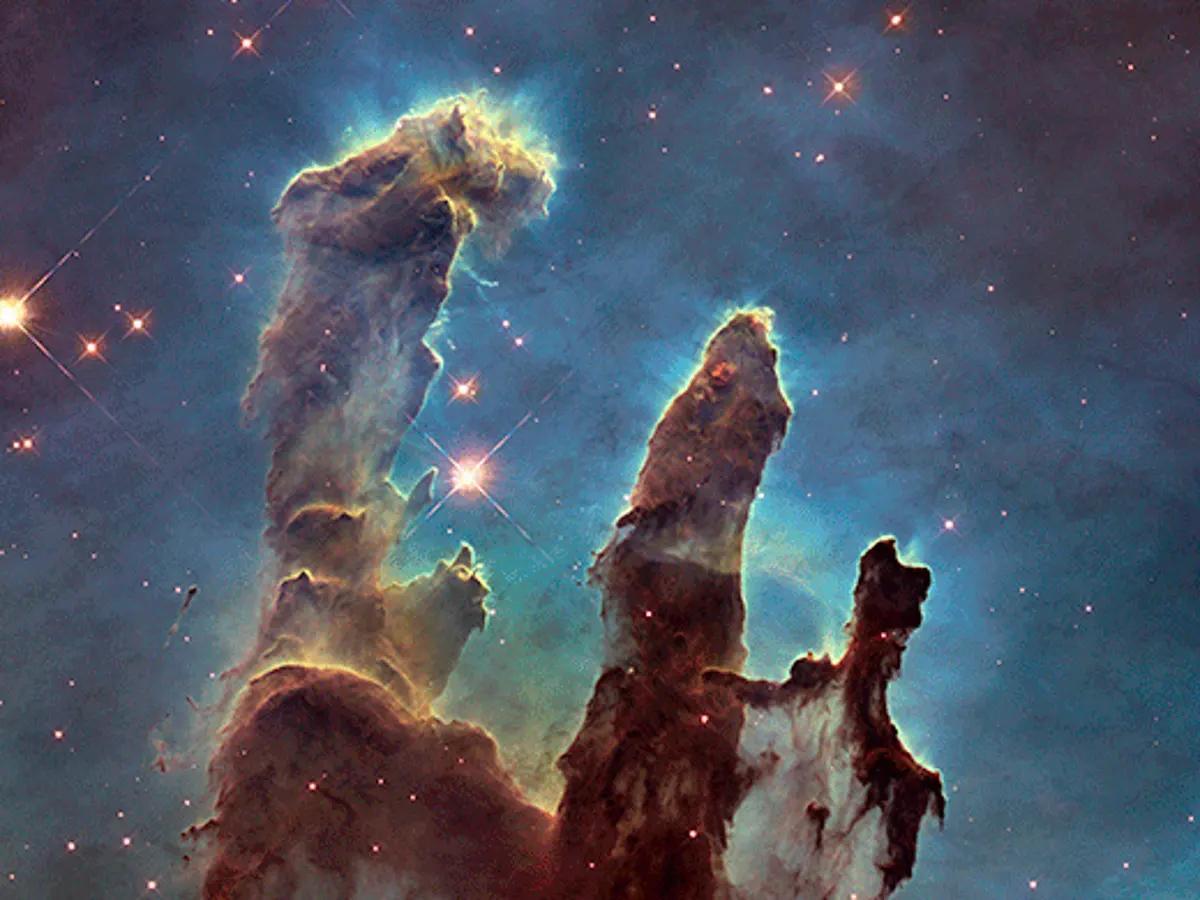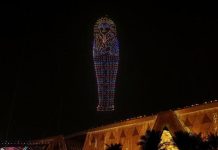Africa-Press – Lesotho. The director of the Management Office of the National Space Program told that it is necessary to awaken “spatial awareness” among the population, particularly young people, through initiatives in primary, secondary and higher education.
Zolana João informed that the World Space Week, which started at the Hotel Epic Sana, in Luanda, and runs until the 10th of this month, is an opportunity for professionals in the sector to analyze their current status. and present innovative proposals.
“The activities proposed this year focus on the administration of courses, the promotion, information and creation of projects of a space and technological nature, for which we have partners, such as the Institutes of Telecommunications (ITEL), Superior Polytechnic of Technologies and Sciences (ISPETC) and the Kandengues Scientists”, explained Zolana João.
Most of the activities, he said, will be carried out in the province of Luanda. “The objective is to take the week throughout the national territory in the upcoming celebrations. For the materialization of this purpose we already have a partnership with the Network of Media Libraries of Angola (REMA)”. Positive Balance
The positive results achieved in the previous editions, according to Zolana João, led to a greater interest, since 2018, from public and private institutions, in participating in the World Space Week.
“To date, we have already had the participation of more than 20 institutions of primary education, 30 of secondary and higher education, as well as companies and members of civil society”.
In previous events, he pointed out, it was possible to promote training, capacity building and transfer of knowledge on space air, in the most different academic spheres.
“It was also an opportunity to stimulate interest in space in Education, Science and Space Engineering, through the dissemination of three editions and cartoons, such as ‘Os Pequenos e os Satellites’, or information about the use of the Angosat Educa and of the Angolan Cansat”.
The goal, he said, is to continue to provide the entire Angolan society with information about the importance of space and the benefits for the country’s socio-economic development. The Act
Under the motto “Space and Sustainability”, the World Space Week starts today, in an act that has the seal of the Ministry of Telecommunications, Information Technologies and Social Communication.
The date was established by the United Nations (UN), with the aim of celebrating the contribution of space science and technology to the improvement of the human condition.
The aim of this edition is to address sustainability in two ways: the first, how space benefits society and contributes to sustainable development on earth; the second, around future challenges to keep space activities and the space environment safe and sustainable.
During World Space Week, a series of activities are planned, including information and dissemination actions to various institutions in Luanda. These are carried out by the Management Office of the National Space Program (GGPEN).
Among the planned actions are seminars and lectures related to astronomy, a marathon of themed films about space or science fiction, special thematic exhibitions in research centers, museums, schools, churches and community centers, crafts and drawings, art galleries, exhibition and art, and short courses related to the space theme.
The activities will be administered by national and international speakers, including Cláudio Melo, astrophysicist and scientific project manager at the Portuguese Space Agency, Zolana João, telecommunications engineer and current general director of GGPEN. Other invited names are Ricardo Conde, electrical and computer engineer, and Tensae Alemayehu Ali, mechanical engineer.
The dates that delimit World Space Week commemorate important events of the space age, such as the launch of the first man-made terrestrial satellite “Sputnik I”, on October 4, 1957, as well as the Treaty for the Peaceful Exploration of Outer Space, signed by the member states of the UN, on the 10th of October in the year 1967. Sputnik I: Earth’s First Artificial Satellite Sputnik-1 was the first artificial satellite, put by humanity in orbit around the Earth.
Launched by the Soviet Union on October 4, 1957, from the Baikonur Cosmodrome, in the former Kazakh Soviet Republic, it was the first of a series of satellites, produced by the Sputnik Program, with the aim of studying the properties of the upper layers of the Earth’s atmosphere, the conditions for launching payloads into space and the effects of microgravity and solar radiation on living organisms, to prepare future manned missions.
Sputnik-1 was a metal sphere, 58 centimeters in diameter, with four antennas for transmitting radio signals. It was placed in a relatively low, elliptical orbit that took 96.2 minutes to complete each revolution around the planet.
The duration and inclination of the orbit meant that the flight path covered virtually the entire inhabited Earth’s surface. Its signals were easily detectable, even by radio amateurs, and were monitored by radio operators around the world.
The signals continued for 22 days, until the transmitter’s batteries ran out on October 26, 1957. After three months, 1,440 complete Earth orbits and a distance traveled of 70 million kilometers, the satellite disintegrated upon re-entering denser layers of the atmosphere, on January 4, 1958. The Reasons
Launched as part of the celebration of the International Year of Geophysics proposed by the United Nations, the satellite’s astonishing success precipitated the “Space Race” between the United States and the Soviet Union, a dimension of the Cold War that lasted until 1975 and took to significant political, military, technological and scientific developments.
Suptinik-1 is a milestone in the history of science, providing valuable information about Earth’s atmosphere and paving the way for the first manned spaceflight. A Deal To Explore Space
The Treaty for the Peaceful Exploration of Outer Space is a document that governs the activities of States in the exploration and use of outer space, including the moon. It is a multilateral agreement, which forms the basis of international space law.
Negotiated and written under the auspices of the United Nations, it was opened for signature in the United States, United Kingdom and the Soviet Union on January 27, 1967, entering into force on October 10, 1967. As of February 2021, 111 countries were treaty parties, including all major space travel nations, while another 23 are signatories.
Key provisions of the treaty include a ban on nuclear weapons in space; limit the use of the moon to peaceful purposes only; establishing that space must be explored and used freely by all nations; and preventing any country from claiming sovereignty over space.
While it prohibits the establishment of military bases, the testing of weapons, and the performance of military maneuvers on celestial bodies, the treaty does not expressly prohibit all military activities in space, the establishment of military space forces, or the placement of conventional weapons in space.
Based on the 1961 Antarctic Treaty, the agreement also focuses on regulating certain activities and preventing unrestricted competition and exploitation that can lead to conflict.
Aate Meaning World Space Week is an international celebration of the contribution of space science and technology to the betterment of the human condition.
During World Space Week, various space-related events and educational programs take place around the world. Synchronization of events attracts media coverage, which contributes to public education regarding space exploration.
The Celebration World Space Week is open to everyone to participate. It is celebrated by government agencies, companies, non-profit organizations, teachers and individuals.
These organize public events, school activities, dissemination actions, placed on Internet pages. World Space Week is coordinated globally by the UN with the support of the Spaceweek International Association.
Generally, in the various countries around the world, where the date is celebrated, there are coordinators. The Education World Space Week is the ideal occasion for teachers to turn to space as a means of stimulating students in math and science.
To help teachers with this task, an “Activity Guide” is available free of charge at www. spaceweek. org. To encourage participation, the International Space Week Association awards prizes to teachers and students, with winners being awarded at a global gala.
A New Future The space race, which began in the 1950s, when the first satellite, Sputnik I, was launched into orbit, was restricted to governments and research institutions, in addition to being predominantly dominated by the United States, the Soviet Union and China.
A few decades later and with the current technological advances it is already possible to use telecommunication satellites for missions with the objective of making space tourism viable.
Space has become a business and private companies are racing to develop technologies that allow people to survive off land. SpaceX, a company founded by Elon Musk in 2002, has been showing, since last year, that it has the conditions to take people to Mars in 2024.
NASA, in turn, believes that the achievement will only be possible in 2030. In addition to SpaceX, Virgin Galactic (founded by Richard Branson) and Blue Origin (by Jeff Bezos) are companies that are also preparing to take tourists beyond the planet’s orbit.
Virgin, for example, has already sold more than 700 advance tickets, at a price of 250 thousand dollars, for a trip, still undated, through space. Investments in technological solutions that help the space industry grow more and more.
Food One of the central issues of space travel has been feeding people. Trips to Mars, for example, which can last up to 5 years. Carrying food for all that time would entail a huge increase in weight and space occupation on the ships.
However, to counter these problems, there has already been an evolution in terms of flavor. The only problem remains the shelf life of food. Therefore, NASA is thinking about how to make it possible to grow food out of orbit, in precarious conditions, such as lack of water, air and soil.
The first experiments involve growing different leaves in clay and it seems to be working. A group of German scientists are also on the same path. At a research station in Antarctica, they were able to grow vegetables in a designed environment without sun or soil.
The team gathered about 8 kg of produce from their first yields, including herbs, lettuce, arugula and red radishes. Health Issues One of the great challenges lies in the long-term consequences of microgravity, radiation and the effects of the space environment on the human body.
In May of that year, for the first time, astronauts used CRISPR/Cas9 technology for gene editing in space. The aim of the study is to understand molecular changes, simulating the genetic damage caused by cosmic radiation, and to understand whether DNA repair methods are different in space and on Earth, although cells have ways of correcting flaws in DNA.
For More News And Analysis About Lesotho Follow Africa-Press






